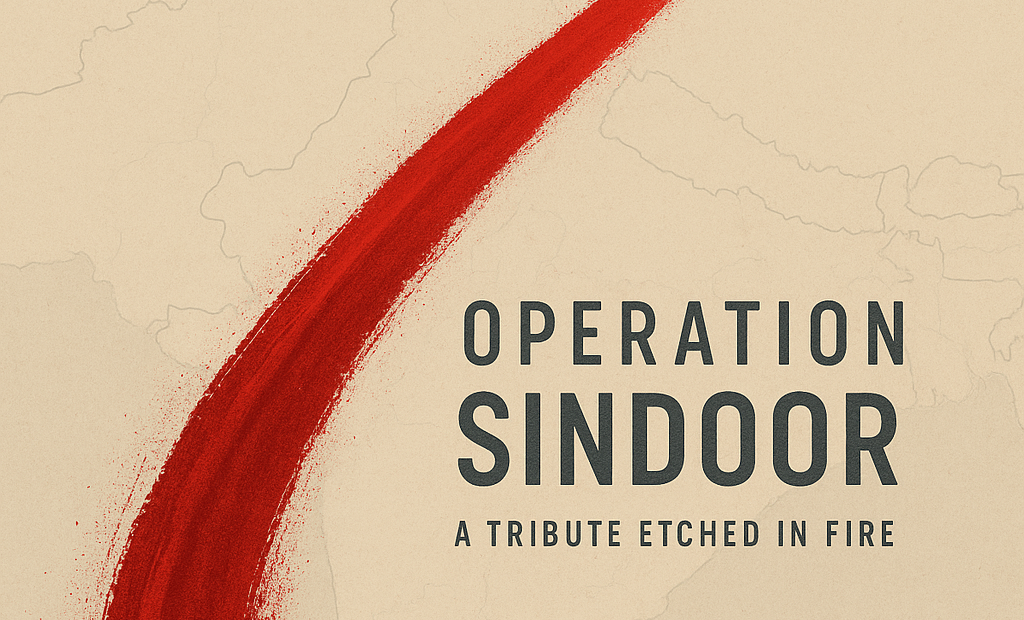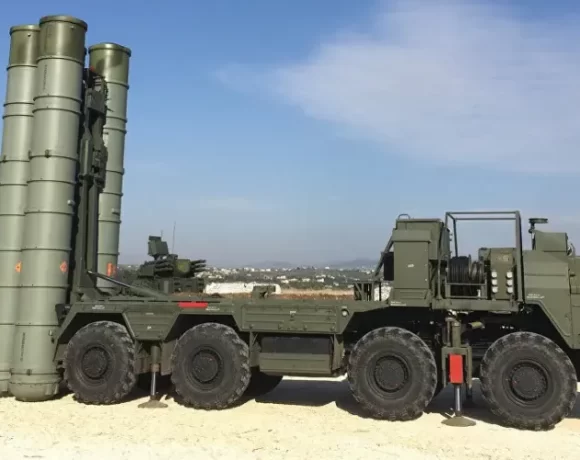
Breaking Down the News: Inside Operation Sindoor – India’s Retaliatory Strike Against Cross-Border Terrorism
Introduction
On the early morning of May 7, 2025, India launched Operation Sindoor, a swift and meticulously planned military offensive targeting terrorist camps in Pakistan and Pakistan-occupied Kashmir (PoK). The operation was India’s direct and forceful response to the gruesome Pahalgam terror attack that shook the nation just two weeks prior. Unlike previous strategic strikes, Operation Sindoor was characterized by its high precision, symbolic timing, and overt messaging. It was not just a military move—it was a statement of national resolve.
The Trigger: The Pahalgam Massacre
On April 22, 2025, terrorists ambushed a group of Hindu tourists in the scenic Baisaran Valley near Pahalgam, Anantnag district. According to eyewitness accounts, the attackers separated victims by religious identity, reportedly forcing them to recite Islamic verses before executing those who failed. The brutality left 26 people dead, including a Nepali national, and was widely condemned as one of the worst hate-driven terror attacks in Kashmir in recent years. A video filmed by a survivor, showing the cold-blooded killings, went viral—prompting a wave of anger across the country.
The attack was quickly attributed to Pakistan-based terror groups, primarily Jaish-e-Mohammed (JeM) and Lashkar-e-Taiba (LeT), both long known to operate under state patronage across the border. India vowed not to let the attack go unanswered, and the Armed Forces began preparing a response—one that would be felt far beyond the LoC.
What is Operation Sindoor?
Operation Sindoor was the codename assigned to India’s retaliatory military strike on May 7, 2025. The word “Sindoor” holds deep cultural symbolism in India—it is the red vermilion applied by married Hindu women, representing marital commitment and sacrifice. Choosing this name was a poignant tribute to the women widowed by the Pahalgam attack and a signal that the nation would not remain silent in the face of such atrocities.
This was no ordinary cross-border retaliation. It was a coordinated, high-precision airstrike designed to cripple the operational capability of multiple terror outfits at once. India took lessons from past confrontations, including the Balakot airstrikes of 2019, and elevated its response to a technologically superior and tactically restrained level. The entire operation lasted barely 25 minutes—but its implications reverberated through diplomatic, military, and strategic corridors around the world.
Precision in Action: Military Execution
Aircraft and Launch Bases
The Indian Air Force deployed its Rafale fighter jets—state-of-the-art aircraft known for their stealth, agility, and multirole capabilities. These jets are capable of carrying a wide range of weapons and have advanced terrain-following capabilities, making them ideal for deep-strike missions.
While the government did not officially confirm the launch points, it’s widely believed that the jets took off from the IAF bases at Ambala (Haryana) and Hasimara (West Bengal), home to India’s Rafale squadrons. The mission was conducted entirely within Indian airspace, ensuring no violation of international boundaries, while still managing to hit deeply embedded terror facilities inside Pakistan and PoK.
Weaponry Used
The operation relied heavily on standoff weapons—high-precision munitions launched from a safe distance without entering hostile airspace. The following systems were reportedly used:
-
SCALP EG (Storm Shadow) Cruise Missiles: With a range of approximately 560 kilometers, these French-origin missiles were the primary choice for striking deeply embedded targets in Bahawalpur and Muridke. Their ability to navigate terrain and avoid radar made them lethal.
-
AASM HAMMER Bombs: These guided munitions provided the perfect balance between precision and flexibility, with a range of up to 60 km depending on altitude. They were likely used for medium-range targets closer to the LoC.
-
Loitering Munitions (Kamikaze Drones): These drones were deployed for real-time surveillance and strike capability, allowing the IAF to adapt to emerging threats on the ground and eliminate mobile or last-minute targets.
Timeline and Execution
Operation Sindoor was executed in a tightly packed window between 1:05 AM and 1:30 AM IST on May 7, 2025. The entire mission lasted approximately 23 to 25 minutes. All aircraft returned safely, and the operation was declared a success before dawn. The synchronized nature of the strikes ensured that all targets were hit simultaneously or within a narrow window, limiting any chance for militants to escape or regroup.
The Targets: Locations and Their Strategic Relevance
Operation Sindoor wasn’t just a military display—it was a targeted decapitation of the infrastructure that fuels jihadist operations against India. The Indian Armed Forces identified and hit nine specific locations across Pakistan and PoK. These were not generic training fields but high-value compounds that served as nerve centers for recruitment, radicalization, training, and logistics.
Targets in Pakistan
-
Markaz Subhan Allah, Bahawalpur
Terror Outfit: Jaish-e-Mohammed (JeM)
Purpose: This facility functioned as JeM’s de facto headquarters. Intelligence indicated it was a site for strategic planning, higher-level training, and recruitment coordination. Bahawalpur has long been associated with JeM chief Masood Azhar and his family. The strike here reportedly killed several of his kin, dealing a symbolic and operational blow. -
Markaz Taiba, Muridke
Terror Outfit: Lashkar-e-Taiba (LeT)
Purpose: The ideological breeding ground of LeT, Markaz Taiba was more than a training camp. It was a hub of radical sermons, logistical planning, and ideological indoctrination. It also functioned as the organizational base for Falah-e-Insaniyat Foundation, LeT’s charitable front. -
Mehmoona Joya Facility, Sialkot
Terror Outfit: Multi-group logistical base
Purpose: This site acted as a logistical node for weapons movement, sheltering personnel before infiltration, and safe passage coordination. Its proximity to the international border made it crucial for operational transit into Jammu. -
Sarjal/Tehra Kalan (Punjab province)
Terror Outfit: Undisclosed composite facility
Purpose: These remote locations offered cover for clandestine activities. Intelligence suggested active use by both LeT and JeM operatives for nighttime arms training and mock ambush drills.
Targets in Pakistan-Occupied Kashmir (PoK)
-
Markaz Ahle Hadith, Barnala (Bhimber District)
Terror Outfit: JeM / Hizbul Mujahideen
Purpose: Disguised as a religious educational center, this location was actually a radicalization hotbed. It played a key role in brainwashing new recruits from PoK and North Punjab. -
Markaz Abbas, Kotli
Terror Outfit: Hizbul Mujahideen (HM)
Purpose: A coordination center for operations along the Pir Panjal range. Used for final-stage training before militants crossed over into Rajouri and Poonch sectors. -
Maskar Raheel Shahid, Kotli District
Terror Outfit: JeM
Purpose: Named after a slain militant commander, this facility specialized in sniper training, bomb-making workshops, and psychological conditioning of fidayeen units. -
Shawai Nallah Camp, Muzaffarabad
Terror Outfit: Hizbul Mujahideen
Purpose: Functioned as an advanced training ground, especially for mountain warfare and mine-laying. This camp had been targeted in prior operations and rebuilt. -
Markaz Syedna Bilal (exact coordinates undisclosed)
Terror Outfit: LeT
Purpose: Served as an indoctrination site and administrative center. Reports suggest this facility also coordinated funding flows from foreign sources via Hawala networks.
Tactical Objectives Achieved
By striking these nine sites, the Indian Air Force effectively:
-
Decapitated Recruitment Pipelines by targeting radicalization centers like Barnala and Muridke
-
Severed Logistical Chains in Sialkot and Kotli
-
Neutralized Tactical Training Facilities such as those in Bahawalpur and Muzaffarabad
-
Sent a Strategic Signal to Pakistan’s deep state that even seemingly sacred safe zones are no longer off-limits
Impact Assessment: What Did Operation Sindoor Achieve?
Tactical Success on the Ground
Initial battle damage assessments from Indian intelligence suggest that all nine targets were successfully destroyed or rendered inoperable. The strikes eliminated approximately 70 operatives, including trainers, commanders, and foreign recruits. Most notably, the Bahawalpur strike reportedly killed 10 family members of Jaish-e-Mohammed chief Masood Azhar, sending a resounding message that familial protection will not shield those involved in terror.
India maintained that there were zero civilian casualties, a detail backed by the precision and timing of the strikes. The use of SCALP and HAMMER missiles ensured minimal collateral damage and surgical accuracy.
Information Warfare Victory
From naming the operation “Sindoor” to striking targets without violating airspace, the mission was carefully curated for global optics. Within hours of the strike, the Indian government released selected satellite images and radar data showcasing the precision of the operation. Media briefings emphasized discipline, legality, and India’s right to self-defense.
Pakistan’s Reaction and Counterclaims
Islamabad swiftly condemned the strikes as a “flagrant violation of sovereignty” and an “act of war.” The Pakistani military claimed it had downed five Indian aircraft and that Indian jets had entered 20–30 km into Pakistani airspace—claims not corroborated by independent observers.
Pakistan confirmed that six of the nine sites were hit and admitted to damage at terrorist-linked locations but attempted to reframe the narrative by alleging civilian casualties, which India categorically denied. Pakistan also reported:
-
8 confirmed dead, 35 injured, and 2 missing within their territory
-
Deployment of Red Alert protocols across Punjab and PoK
-
Emergency readiness in over 20 government hospitals
As cross-border shelling intensified following the strike, Pakistan also shut down civilian access to several airports, suggesting anticipation of further escalations.
Global and Diplomatic Response
The world watched with alarm as tensions between two nuclear-armed neighbors escalated once again. Key international reactions included:
-
United Nations: Called for “maximum restraint” from both countries and emphasized dialogue
-
United States: Stated it was monitoring the situation “very closely” and urged India and Pakistan to avoid further military escalation
-
Russia and China: Issued generic statements advocating peace but maintained diplomatic ambiguity
-
Turkey and Iran: Expressed solidarity with Pakistan, while stopping short of condemning India
-
France: Praised India’s use of French-origin weapons and emphasized the importance of surgical precision in counter-terror operations
While there were no formal condemnations of the Indian strike from major global powers, the overall tone from international actors emphasized de-escalation.
Economic and Military Fallout
Pakistan’s Financial Markets Bleed
In the immediate aftermath of the strikes, Pakistan’s stock markets plunged, with the Karachi Stock Exchange dropping nearly 8% in a single day. Investor confidence was rattled not just by the strikes, but by the possibility of retaliatory conflict. The Pakistani Rupee also depreciated against major currencies due to fears of prolonged instability.
Military Escalation Preparedness
In anticipation of a counter-strike, India placed several forward military units on high alert and temporarily closed down 16 airports across Punjab, Himachal Pradesh, Rajasthan, and Jammu. The Indian Navy also reportedly moved assets toward the western front in silent readiness.
Conclusion: The Message of Operation Sindoor
Operation Sindoor was more than just a tactical airstrike—it was a calibrated geopolitical message. For the first time, India demonstrated that it could strike deep, strike fast, and strike surgically—without crossing borders or risking escalation. It redefined the contours of India’s counter-terror doctrine by combining advanced weaponry, intelligence supremacy, and symbolic messaging.
More importantly, it showed that India no longer sees itself as a passive victim of cross-border terror. With Sindoor, India told the world—and its enemies—that justice will be delivered, swiftly and decisively. It reminded every state that shields terror groups that India’s threshold for tolerance has changed. And in doing so, it shifted the very fabric of South Asian security calculus.


















